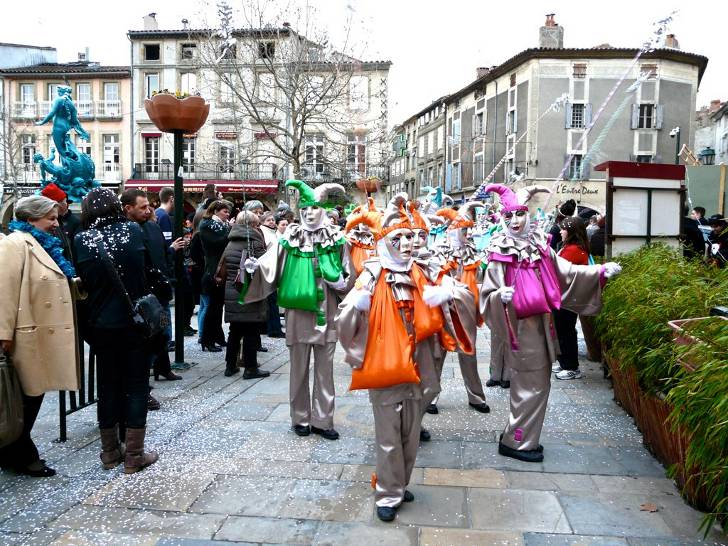The history of the Limoux Carnival dates back to the 14th century. According to a tradition that was established back then, local millers were released from their dues to the Dominican priory at the Monastery of Notre-Dame-de-Prouille on Shrove Tuesday (Mardi Gras). They celebrated this by walking through the streets of Limoux, scattering flour and sugared almonds, and dancing to the accompaniment of minstrels.
The Carnival of Limoux was officially established in 1604. Inspired by the millers’ procession, it featured revelers dressed as millers who tossed sugared almonds and flour at the crowd and danced along the streets accompanied by musicians. According to legend, traditional dance moves that can be seen at the Carnival were inspired by winemakers crushing grapes with their bare feet to extract juice.
The Limoux Carnival typically starts in January and lasts for two and a half months. The Carnival is known for its bands that participate in colorful processions held every weekend. A band is a group of people dressed according to a theme. Each band is composed of about 20 people from different backgrounds. The bands can represent a neighborhood, a company, etc. They have intransigent rules of recruitment: the members must be accepted unanimously.
The Carnival has about two dozen groups. Their names are specific to their neighborhood or their peculiar feature. All bands have recognizable costumes and masks. For example, members of the band named Les Limouxins wear masks with disproportionately long, beak-like noses that remind of plague doctor masks. Las Coudenos wear fuchsia and black robes, black hats and white masks. Le Paradou can be recognized thanks to their black and white Pierrot costumes.
The groups entertain people in turns every weekend. They are accompanied by musicians playing traditional local music. The musical heritage of the Carnival of Limoux includes more than a hundred pieces created by local composers, many of the melodies were inspired by operas.
The Carnival culminates on the night of Limoux wine (Blanquette de Limoux). The closing ceremony features the mock trial of King Carnival. The verdict is read in Occitan, the language spoken in the historical region of Occitania, and then the effigy of the King is burnt in a bonfire. While the effigy is burning, the revelers sing a traditional song titled Adieu paure Carnaval.

Photo: Jan Riordan




